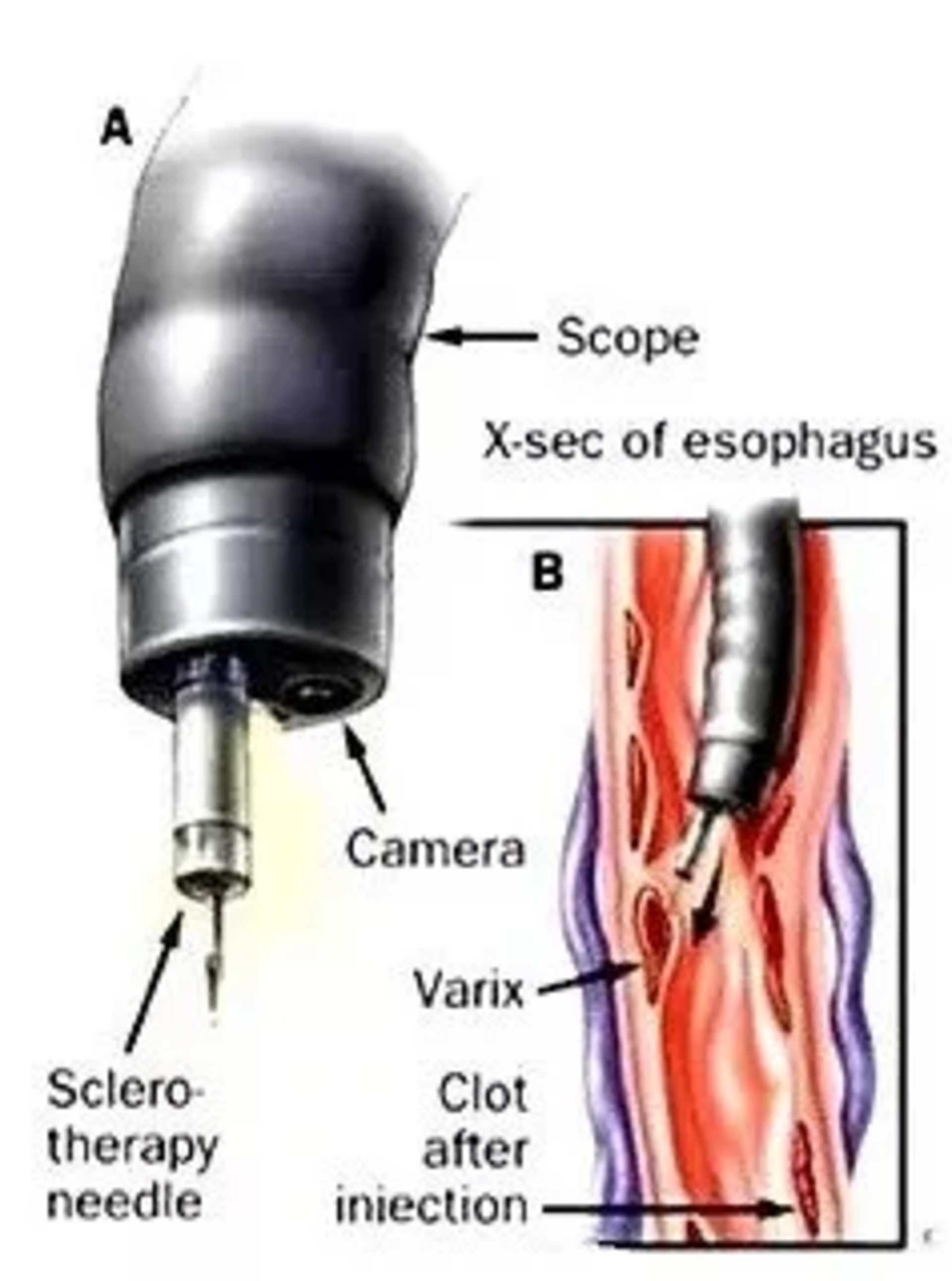What Is Injection Sclerotherapy and Glue Injection?
Injection sclerotherapy and glue injection are minimally invasive procedures used to stop bleeding in the digestive tract. During these procedures, a sclerosant or glue is injected directly into abnormal or bleeding vessels to arrest and prevent further bleeding.
Sclerosant Injection
A sclerosant is commonly used for treating esophageal varices, gastric varices, and some ulcer-related bleeders. It helps to close the abnormal blood vessels, thereby reducing the risk of further bleeding.
Glue Injection
Glue injections are specifically used for gastric or ectopic varices. This procedure involves injecting a special glue-like substance into the affected area to seal the bleeding vessels.
Why Are Sclerotherapy and Glue Injection Done?
These procedures are typically used to manage and treat conditions that lead to abnormal bleeding in the gastrointestinal tract.
Conditions Treated:
- Esophageal Varices: Enlarged veins in the esophagus that may rupture and cause significant bleeding.
- Gastric Varices: Abnormal veins in the stomach that can bleed.
- Ulcer Bleeding: Occasional bleeding from ulcers in the stomach or duodenum.
How Is the Procedure Performed?
The procedure is performed using an endoscope to visualize the target area and ensure accurate placement of the sclerosant or glue.
Step-by-Step Process:
- Endoscopic Insertion: The procedure begins with the insertion of an endoscope into the patient’s digestive tract, typically through the mouth.
- Injection of Sclerosing Agent or Glue: Once the area is located, a sclerosant or glue is injected into or around the bleeding vessel or varices. The agent works by sealing the vessels, halting the bleeding.
- Observation and Monitoring: The doctor will monitor the area and ensure that the bleeding is successfully stopped.
What to Expect During the Procedure
Injection sclerotherapy and glue injection are minimally invasive procedures that typically require no incisions, making them less invasive than traditional surgery.
Preparation:
- Fasting: You may be required to fast for several hours before the procedure to ensure your stomach is empty.
- Sedation: The procedure is usually performed under mild sedation to keep you comfortable during the process.
Procedure Duration:
These procedures generally take about 30 minutes, depending on the complexity and number of areas being treated.
Results and Aftercare
After the procedure, you may be monitored for a short period to ensure there are no complications such as infection or recurrence of bleeding.
Possible Results:
- Immediate Effect: Most patients experience an immediate reduction in bleeding following the procedure.
- Long-Term Effect: The sclerosant or glue can help prevent further episodes of bleeding by sealing the problematic vessels.
Aftercare:
- Rest: You may need to rest for a few hours following the procedure.
- Medications: Your doctor may prescribe medications to manage any discomfort or prevent further bleeding.
- Follow-Up: A follow-up appointment will be scheduled to ensure the bleeding remains controlled and to monitor your recovery.
Where Is Injection Sclerotherapy and Glue Injection Performed?
At RL Gastrocare, these procedures are performed in a well-equipped and safe environment under the expertise of Dr. Rupesh Lunkad, a skilled gastroenterologist with years of experience in treating gastrointestinal bleeding.
For more information or to schedule a consultation, contact RL Gastrocare Clinic in Swargate, Pune.